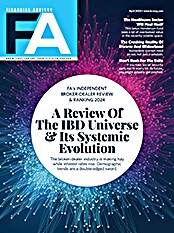Listen for facts, like who, when, where, how much and how many. Also listen for motivations and needs; these are hinted at in phrases like "we're really proud of our success," "we're nervous about our future," and "I'm uncertain about how my spouse feels." Write down the phrases you hear from clients, repeat them and ask for greater detail. It might sound like this: "You're nervous about your future? How so?" or "When you say you're uncertain about how your spouse feels, say more if you will."
Keeping a record: Take good notes, and as you do, capture the client's words. The ability to reflect clients' language back to them shows you're listening. Even if you repeat the words back to them days later to ask them to elaborate, they will be better able to pick up where they left off in sharing their critical information. "A few days ago, Gregory, you mentioned that you were excited at the prospect of building a legacy that will help not only your family, but also your favorite causes. Can you expand on what you mean by that?"
Avoiding "Yeah, but...": Your client will inevitably voice opinions and ideas that you don't agree with. But be careful that you don't negate a client's point of view by using the phrase, "Yeah, but..." It puts you in a position of almost fighting with them. Here's why: "But" is an erasure word. Whatever comes before the word "but" in a sentence is discounted or dismissed, and what follows is the real message that the client is meant to understand. "Yeah, but..." can make you sound defensive, and it puts you at odds with your client.
This is not to say that you should agree with clients at all times. When you do want to disagree, however, first validate the clients' opinion by empathizing with their point of view. Then use the word "and" to connect your counterpoint. "And" is simply less confrontational. For example: "You seem to be saying that the current market indicators point to a continued cash position. And on the other hand, here's what we're seeing that may direct us to a more leveraged position..."
The value of "Exactly": At a certain point in a conversation with a client, you will know with near certainty that he is inclined to work with you. Interestingly, it usually comes in advance of presenting a product or service. How is it that clients might be willing to invest with you even though they haven't yet had the benefit of hearing your solution? It comes when you hear the word "exactly."
More so than with any other word or phrase, "exactly" is the word a client will reward an advisor with if he has truly listened and taken the time to reflect his understanding of what the client is saying. After more than 25 years in financial services sales, I've come to appreciate that this word indicates that a client feels understood by the advisor, is more willing to work with the advisor and is beginning to trust the advisor.
You need to resist the temptation to jump into presenting products and solutions; instead, take the time to express your understanding of the clients' needs, wants, motivations and circumstances. When they look at you with surprise, relief and the satisfaction of being understood, you'll hear "Exactly!" (or its cousins, "That's it," "Correct" and "Precisely"). That's your signal that the client is most receptive to hearing your ideas and you can go ahead and present.
Each of these techniques for better client engagements through better listening is easy enough. But while these are simple skills, they're hard disciplines. They provide the opportunity to shorten sales cycles, reduce errors and misdirects in client service, and increase client trust and satisfaction. Less time, better results, more return on your time invested. Now that's worth listening to.
Molly Sargent is president of Professional Impressions Consulting (www.proimpress.com or i[email protected]), a sales coaching and training firm dedicated to working with financial services professionals.








